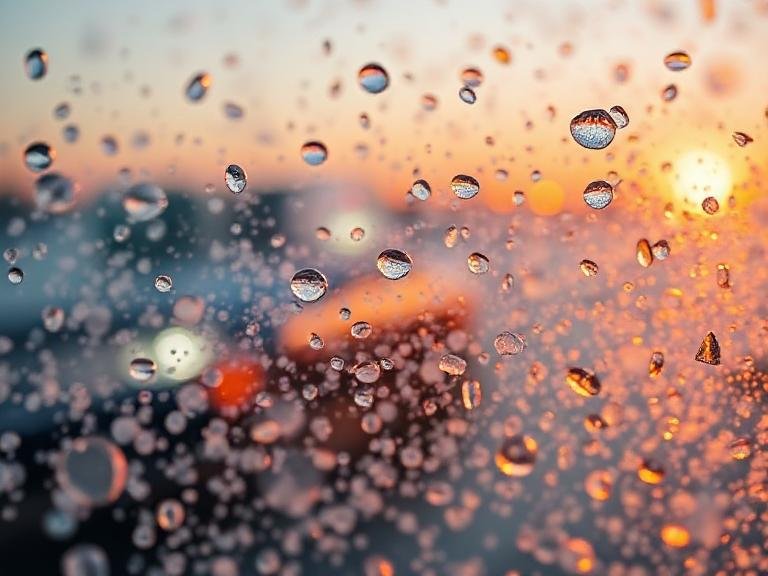
How Vehicles Contribute Half of Microplastic Waste
Every few years, your car’s tires become worn and require replacement. But have you ever wondered what happens to that missing tire material?
Unfortunately, much of it ends up in waterways, where microscopic microplastic particles from synthetic rubber tires carry harmful chemicals that can accumulate in fish, crabs, and potentially even humans who consume them.
Our Research Mission
As analytical and environmental chemists, we’re investigating methods to remove these microplastics and their toxic chemical cargo before they reach aquatic ecosystems and the organisms that inhabit them.
The Scale of a Global Problem
Millions of metric tons of plastic waste enter the world’s oceans annually. Recent research has revealed that tire wear particles account for approximately 45% of all microplastics found in both land-based and aquatic environments.
Tires continuously shed microscopic plastic fragments as they roll across road surfaces. Rainfall washes these tire wear particles into roadside ditches, which eventually flow into streams, lakes, rivers, and ultimately the oceans.
Impact on Aquatic Life
During this journey, fish, crabs, oysters, and other marine creatures often ingest these tire wear particles along with their regular food sources. With each meal, they also consume highly toxic chemicals that can affect both the animals themselves and any predators that feed on them.
Certain fish species, including rainbow trout, brook trout, and coho salmon, are experiencing population declines due to toxic chemicals associated with tire wear particles.
A Deadly Chemical Connection
In 2020, researchers discovered that more than half of the coho salmon returning to streams in Washington state died before spawning, primarily due to 6PPD-Q, a chemical derived from 6PPD, which is added to tires to prevent degradation.
Beyond Aquatic Ecosystems
The effects of tire wear particles extend beyond marine life. Both humans and animals may be exposed to airborne tire wear particles, particularly those living near major highways.
A study in China detected the same chemical, 6PPD-Q, in the urine of both children and adults. While research continues on this chemical’s effects on human health, recent studies indicate that exposure could damage multiple human organs, including the liver, lungs, and kidneys.
Local Research Findings
In Oxford, Mississippi, we identified more than 30,000 tire wear particles in just 24 liters of stormwater runoff from roads and parking lots following two rainfall events. In high-traffic areas, we believe concentrations could be significantly higher.
Industry Response and Challenges
The Interstate Technology and Regulatory Council, a coalition of state agencies, recommended in 2023 that alternatives to 6PPD in tires be identified and implemented to reduce 6PPD-Q in the environment. However, tire manufacturers claim no suitable replacement currently exists.
Community-Based Solutions
At the University of Mississippi, we’re experimenting with sustainable methods to remove tire wear particles from waterways using accessible, low-cost natural materials derived from agricultural waste.
The Simple Solution
Our approach is straightforward: Capture tire wear particles before they reach streams, rivers, and oceans.
Testing Natural Filtration Methods
In a recent study, we tested pine wood chips and biochar – a form of charcoal produced by heating rice husks in limited oxygen through a process called pyrolysis – and found they could remove approximately 90% of tire wear particles from water runoff at our Oxford test sites.
Biochar has established credentials for removing contaminants from water due to its large surface area and pores, abundant chemical binding sites, high stability, strong absorption capacity, and low cost.
Wood chips, with their rich composition of natural organic compounds, have also proven effective at removing contaminants. Other researchers have used sand to filter microplastics, but its removal rate was significantly lower compared to biochar.
Real-World Application
We designed a biofiltration system using biochar and wood chips in a filter sock and installed it at the outlet of a drainage system. We then collected stormwater runoff samples and measured tire wear particles before and after installing the biofilters during two storms over two months. The concentration of tire wear particles was significantly lower after the biofilters were in place.
The distinctive elongated and jagged characteristics of tire wear particles make them easy to trap or entangle in the pores of these materials during storm events. Even the smallest tire wear particles were captured in the complex network of these filtering materials.
Future Potential
We believe this approach has strong potential for large-scale implementation to reduce tire wear particle pollution and other contaminants during rainfall events.
Since biochar and wood chips can be produced from agricultural waste, they are relatively inexpensive and readily available to local communities.
Long-Term Considerations
Long-term monitoring studies will be necessary, especially in high-traffic environments, to fully determine the effectiveness and scalability of this approach. The source of filtering materials is also important. Concerns have been raised about whether raw farm waste that hasn’t undergone pyrolysis could release organic pollutants.
Like most filtration systems, the biofilters would need periodic replacement – with used filters properly disposed of – since contaminants accumulate and the filters degrade over time.
Environmental and Health Implications
Plastic waste is damaging the environment, contaminating the food supply, and potentially threatening human health. We believe biofilters made from plant waste could provide an effective, relatively inexpensive, and environmentally friendly solution.
Boluwatife S. Olubusoye, Ph.D. Candidate in Chemistry, University of Mississippi and James V Cizdziel, Professor of Chemistry, University of Mississippi





